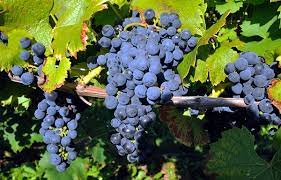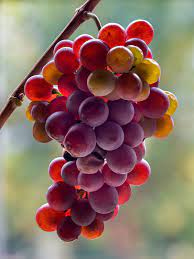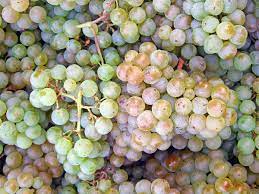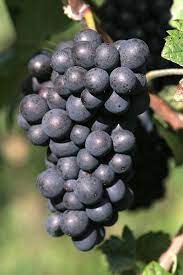Many popular varieties of wine grapes have the word “Pinot” in their name, including Pinot Noir, Pinot Grigio, Pinot Blanc, and Pinot Meunier. Are these grapes connected somehow? Understanding the relationship between these grapes will enhance your knowledge, appreciation, and enjoyment of all the Pinots you drink.
First of all, they share part of their name, Pinot, which means resembling a pinecone. The varietals were given this name due to the way the grapes grow in pinecone-shaped clusters. The latter of their names refers to the color of the grapes.
Pinot is mentioned in the historical record as early as the fourteenth century, where it was already considered important in eastern France and southern Germany to both the nobility and the church. In addition to the large number of Pinot clones, it is also genetically related through a parent/offspring relationship to grapes like Chardonnay, Gamay, and Melon de Bourgogne. The Germans recognize Pinot’s historical link to France’s Burgundy region in the names for their Pinot clones: Spätburgunder (late burgundy), Weissburgunder (white burgundy), and Grauburgunder (gray burgundy) for Pinot Noir, Pinot Blanc, and Pinot Grigio respectively.

When the pollen from one grapevine pollinates another grapevine, the seeds that result have DNA mixed from the two parent plants. Newly planted grape seeds produce a new variety. If instead, wine growers want to create new plants that maintain the original DNA, they propagate the single variety using a technique called “grafting.” Grafting is essentially taking cuttings from a vine to produce a new plant rather than using seeds. Vines grown from cuttings are called “clones” because they came from the same plant and are therefore genetically identical.
If a variety is cloned over and over for centuries, mutations can cause significant variation among examples of the same variety. The older a variety, the more mutations can occur. Pinot is a very old variety. So, Pinot Noir, Pinot Grigio, Pinot Blanc, and Pinot Meunier are all the same variety, but different clones expressing various mutations.
Pinot Noir
The most famous of the clones, Pinot Noir is a light-bodied red grape with low to moderate tannins and bright berry flavors. It still finds its fullest expression in its home region of Burgundy, where it is the only red grape grown in any quantity and can command prices in excess of $10,000 per bottle. Fortunately, you can find Pinot Noir to fit almost any budget.
Pinot Noir is a semi-acidic, crisp, and light bodied red wine with flavor notes of red berries, cherries, and vanilla.
When it comes to food, the versatile Pinot Noir wine pairs nicely with light meats such as chicken and fattier fish like salmon.


Pinot Grigio/Gris
Pinot Gris is often a mix of bronze and pink grapes within the same bunch. Pinot Gris is a mutation of Pinot Noir in which it lacks the red pigment. This results in lighter grapes and fruitier wines. The juice from both Pinot Noir and Pinot Gris grapes are clear. Pinot Noir is allowed to remain with its skin for a certain number of days giving the wine its slightly red color. Pinot Gris on the other hand is not left with the skin. The resulting wine is white.
Known as “Pinot Gris” in France, Pinot Grigio is among the most popular white wines in the world. Bottles from Italy’s Veneto region are especially well known in America. Pinot Grigio has a clean profile of apple and pear with a very slightly bitter finish. The wine’s somewhat neutral aromatics make it a wonderful pairing with delicate foods that might be overwhelmed by more aggressive wines. It pairs well with light seafood dishes.
Pinot Blanc
Pinot Blanc is a white grape found mainly in France and Italy. It has some similarities to Pinot Grigio. Pinot Blanc generally has more acidity, citrus notes, and lean mineral character. Pinot Blanc from the Alsace region of France is of especially good quality. But, more great examples from the New World become available all the time. Try Pinot Blanc with seafood that contains a citrus element in its preparation, like halibut in lemon sauce.


Pinot Meunier
Pinot Meunier is one of the unsung heroes of the Champagne region. Its name translates roughly to “miller’s Pinot” because its leaves are speckled as though dusted with flour. Although it is a red grape, Pinot Meunier can be made into red, rosé, and white wines. It is very rare to find a Pinot Meunier made into a still, varietal wine. It is known as one of the 3 grapes that are allowed in a Champagne (along with Chardonnay and Pinot Noir).

